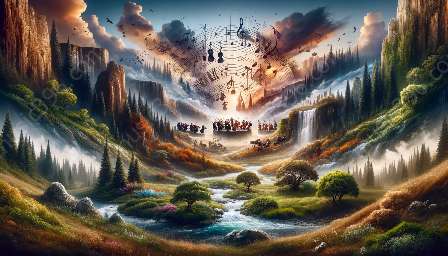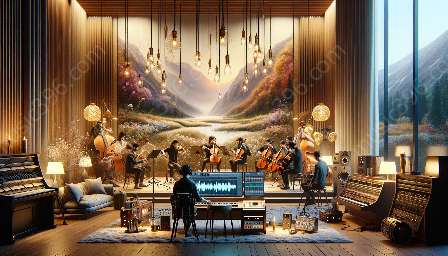Film and television scores play a crucial role in shaping the viewer's emotional experience and understanding of the narrative. This complex interplay involves the delicate balance between amplifying the emotions and supporting the storyline.
The Role of Film and Television Scores in Narrative Enhancement
Film and television scores serve as a powerful storytelling tool, enhancing the narrative through the strategic use of music. They have the ability to underscore the emotional intensity of a scene, provide clues about character motivations, and shape the overall mood of the story.
When scores amplify the narrative, they intensify the impact of pivotal moments, heighten suspense, and evoke a visceral response from the audience. The amplification often occurs during climactic scenes, adding depth and resonance to the narrative arc.
Supporting the Narrative Through Musical Composition
While amplification is essential, scores also need to delicately support the narrative. They achieve this by complementing the dialogue, enhancing the visual elements, and maintaining coherence with the overall theme of the production. The music aligns with the tempo, rhythm, and cadence of the visuals, creating a seamless fusion of audio-visual storytelling.
Analysis of Narrative Emotion and Music
Analyzing the emotional dynamics of the narrative and the corresponding music provides valuable insights into how scores navigate this delicate balance. By examining the musical motifs, leitmotifs, and orchestration choices, one can gain a deeper understanding of how the music interacts with the narrative, amplifying or supporting various emotional states.
The Role of Musical Themes and Motifs in Narrative Pacing
Music analysis allows for a deeper exploration of how the pacing of the narrative is influenced by the thematic material. The development and transformation of musical themes mirror the evolving storyline, creating a symbiotic relationship that shapes the viewer's engagement.
Intertwining of Character and Musical Identity
Character-specific musical motifs further illuminate the interplay between film and television scores and the narrative. The music becomes an extension of the characters, shaping their identity and emotional resonance, thereby enriching the storytelling.
Conclusion
In conclusion, film and television scores navigate the balance between amplifying and supporting the narrative by strategically intertwining with the emotional and thematic elements of the storytelling. The intricate relationship between music and narrative provides a rich tapestry of analysis, offering a deeper appreciation for the artistry and impact of scores in the cinematic and televised experience.

































